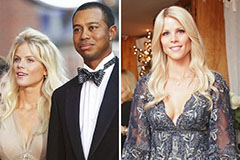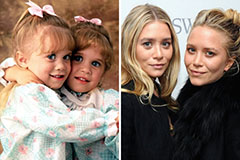Portrait painting is a fascinating art form that seeks to depict the very essence of a person. Masterful artists employ a selection of techniques to convey not only the physical attributes but also the inner soul of their sitters. Through careful observation and a deep understanding into human feelings, portrait painters produce works here of art that are both realistic and poignant.
A genuine portrait is more than just a representation; it's a glimpse into the mind of the person being depicted. Famed portrait painters throughout history have deposited behind a wealth of masterpieces that continue to amaze viewers today.
Brushstrokes and Emotion: Unveiling the Soul Through Paint
A painting is more than just a visual depiction; it embodies a world of emotions waiting to be discovered. Each stroke of the brush reveals a fragment of the painter's soul, interlacing together vibrant hues to form an emotional narrative.
The intensity of a mark can communicate anger, while the smoothness of a sweep might hint at peace. Color, too, plays a crucial role, evoking a variety of emotions from happiness to sorrow.
By studying these parts, we can embark on a journey to understand the artist's aspirations and, in doing so, gain a deeper insight of the human condition.
Beyond the Canvas
A journey into portraiture extends far beyond the mere depiction of someone's physical features. It seeks to capture the spirit of a subject, displaying their inner emotions. Portraiture becomes a powerful tool for painters to explore the human condition.
From the stroke of a brush or the click of a lens, portraiture facilitates us to connect with others on a deeper level.
Peering into the Soul: Portraits as Windows to History
Portraits capture the essence of humanity across time. From early civilizations to the modern era, artists devised their talents to illustrate the human experience in paint, sculpture, and photograph. Each medium becomes a window into the lives, thoughts, and emotions of those who stand.
- Analyzing these portraits unveils not only individual stories but also societal trends and cultural shifts. They function as a enduring record of human emotion, allowing us to commune with the past and understand a deeper awareness of our shared history.
Eyes on Canvas: Power and Presence in Portraiture
Portraiture has always been a fascinating arena/domain/stage where power and presence are inextricably linked. From the regal countenances/visages/features of monarchs to the unassuming/modest/simple expressions of everyday individuals/persons/folk, each painted gaze offers/presents/reveals a unique window into the dynamics/nuances/complexities of society/human interaction/the human condition.
The artist's/painter's/creator's skill in capturing not only the physical likeness but also the essence/spirit/character of their subject is what truly elevates/transforms/enhances a portrait from a mere depiction/representation/illustration to a powerful statement/reflection/work of art.
Through careful use of composition, light, and color, artists have employed the painted gaze to convey/communicate/express a range of emotions, from joy to sorrow, and to underscore/highlight/emphasize the status/position/rank of their subjects within society/their world/the hierarchy. A portrait can be a means of social commentary, reflecting the values/beliefs/ideals of the era in which it was created.
From Realism to Impressionism: The Evolution of Portrait Painting
Portrait painting underwent a remarkable transformation from the strictures of Realism to the free-flowing aesthetics of Impressionism. Realist artists, such as Gustave Courbet and Jean-Auguste-Dominique Ingres, sought to capture the world accurately, focusing on minute details and a realistic depiction of their subjects. Their portraits often conveyed a sense of weighty contemplation.
In contrast, Impressionist painters like Edgar Degas and Pierre-Auguste Renoir embraced a more subjective approach. They were less concerned with capturing precise details and instead sought to capture the fleeting effects of light and color. Their portraits are defined by loose brushstrokes, vibrant hues, and a sense of energy. The shift from Realism to Impressionism reflected a broader cultural change, encouraging new ideas about perception and the role of the artist.
 Andrea Barber Then & Now!
Andrea Barber Then & Now! Ashley Johnson Then & Now!
Ashley Johnson Then & Now! Michael Fishman Then & Now!
Michael Fishman Then & Now! Elin Nordegren Then & Now!
Elin Nordegren Then & Now! The Olsen Twins Then & Now!
The Olsen Twins Then & Now!